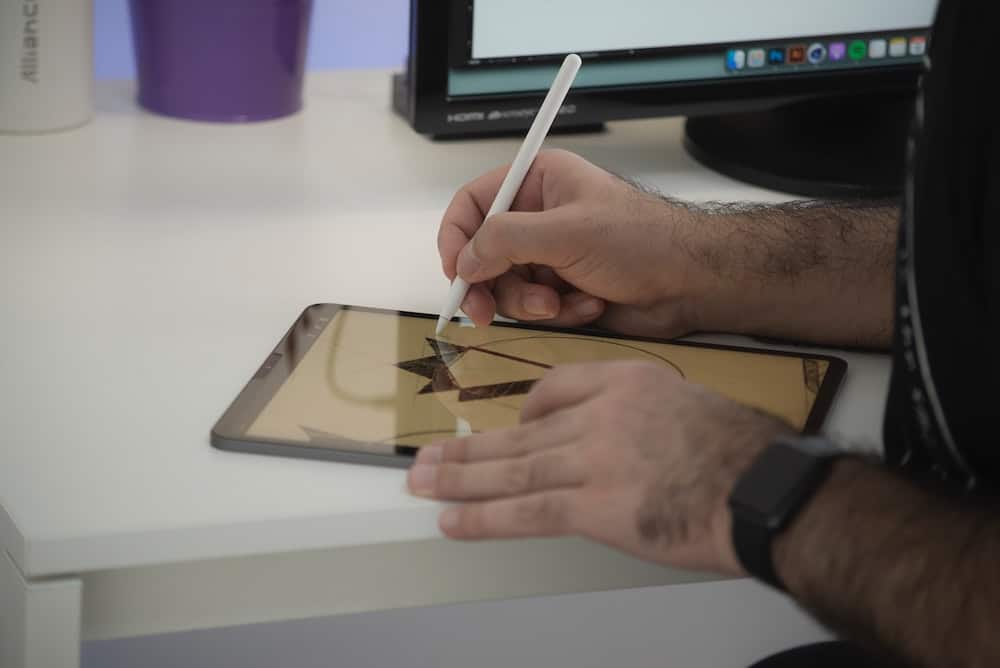
[Image above] While some companies offer different types of stylus tips to mimic a paper-like writing experience on electronic screens, others are focusing their attention on screen design. Credit: Milad Fakurian, Unsplash
As much as my friends try to convince me of the benefits of e-readers, I remain firmly attached to my physical books. Not only do I avoid the risk of having my books disappear without warning, nothing compares to the feel of turning crisp pages by hand.
Electronics manufacturers understand this desire for tactile sensation, and there are numerous different styluses on the market that in theory offer a more paper-like writing experience. However, other companies, such as reMarkable, are focusing their attention on screen design to achieve a paper-like sensation.
Texturing the screen or screen protector is one way manufacturers attempt to mimic the feel of paper. Of course, different stylus tips interact with textured surfaces in distinct ways, so it’s important to investigate these behaviors to determine the optimal texture/stylus combination for a paper-like experience.
In a recent open-access paper, researchers from Nippon Electric Glass Co. and Kumamoto University compared the friction behaviors of three commercial stylus tips on flat and textured glass surfaces, which were fabricated via micro-slurry-jet processing.
The stylus tips all came from the Japanese company Wacom and included an elastomer tip (ACK-20004), a polyacetal tip (ACK-20001), and a hard-felt tip (ACK-20003). The researchers performed two kinds of tests on each tip:
- Compression tests to determine the amount of elastic deformation. The tip was fixed at orientation angles of 90° and 45° and pressed onto the writing surface at a speed of 0.05 mm/s. The compression was measured thrice by gradually increasing the pushing load up to 5 N.
- Reciprocating friction tests to determine frictional mechanisms based on adhesive, abrasive, and deformation frictions. The tip was fixed at an orientation angle of 45° and pressed onto the glass plate under a load of 1.96 N. Reciprocating motions with a stroke of 40 mm and a period of 14 seconds were applied for 100 cycles.
The researchers also used a laser microscope to determine contact area between the stylus tip and glass surface.
Based on these tests, the researchers concluded that while textured glass afforded reduced friction coefficients for the elastomer tip—which may allow for reduced tip damage—it led to increased friction coefficients for the polyacetal and hard felt tips.
These contrasting findings are attributed to differing interactions of the tips with unevenness in the glass surface (nanometer-sized asperities and submillimeter/millimeter sized pitches). For the elastomer tip, surface unevenness reduced the real contact area between the tip and the glass, leading to reduced adhesion friction. However, for the polyacetal and hard felt tips, surface unevenness led to increased abrasive friction as the tip caught on asperities.
“We believe that our findings can facilitate the development of writing tips and surfaces for use with tablet-type devices,” the researchers conclude.
The open-access paper, published in Tribology International, is “Friction behaviors of elastic materials sliding on textured glass surfaces” (DOI: 10.1016/j.triboint.2022.107539).
Author
Lisa McDonald
CTT Categories
- Electronics
- Glass


